Where Does India Rank in Slip and Gully Catching Efficiency Since 2023 in Test Cricket?
Coming to the slips, India leads all teams in Test cricket since 2023 with an impressive catch efficiency of 80.6 percent. New Zealand and Sri Lanka follow closely at 78.5 and 78.3, respectively. Traditional powerhouses like England and Australia trail behind, while West Indies are at the bottom with just 65.6 percent efficiency.
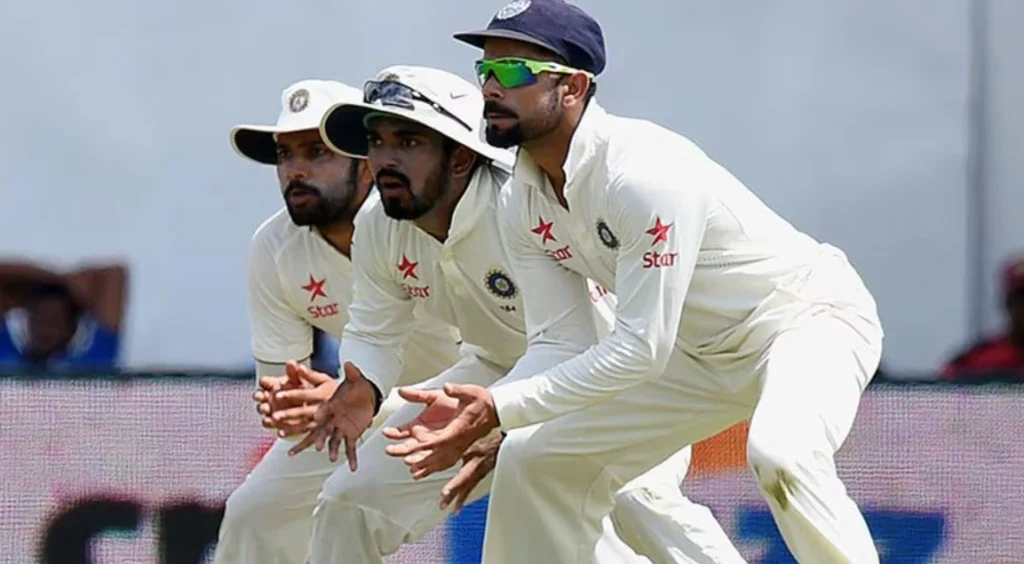
With the loss in the first Test against England at Leeds, things look a bit messy for the Indian Cricket Team, who have begun a new era under Shubman Gill’s captaincy. This change comes after the retirement of star players like Rohit Sharma, Virat Kohli, and Ravichandran Ashwin. Despite India hitting five fifties in the match, they still ended up on the losing side on the final day. Many fans believe that India’s sloppy bowling and missed chances in the slip cordon and gully were major reasons for the defeat. Dropped catches allowed England batters to settle in, build partnerships, and take the game away.
| Rank | Team | Efficiency % |
|---|---|---|
| 1 | India | 80.6 |
| 2 | New Zealand | 78.5 |
| 3 | Sri Lanka | 78.3 |
| 4 | South Africa | 75.0 |
| 5 | England | 74.5 |
| 6 | Australia | 72.3 |
| 7 | Pakistan | 68.0 |
| 8 | Bangladesh | 67.2 |
| 9 | West Indies | 65.6 |
For a while now, Indian fans have pointed out concerns over fielding, especially in the close-catching positions. Interestingly, the recent stats since 2023 reveal a different story. India actually ranks number one in catch efficiency at slips and gully, with an impressive 80.6 percent success rate. They are ahead of other strong fielding sides like New Zealand (78.5 percent), Sri Lanka (78.3 percent), and South Africa (75.0 percent). Other top teams like England and Australia sit at 74.5 and 72.3 percent, respectively. Let’s analyse how India, England, New Zealand, South Africa and Australia have performed in the slips and gully region since 2023 in the Test Format.
India — 80.6%
India didn’t make it to the World Test Championship Final, but their slip and gully fielding was the best in the game. They played 19 Tests, winning 9, losing 8, and drawing 2, finishing with a points percentage of 50.00, just short of the final. Their catching in the cordon was top-notch, with an 80.6% efficiency, the highest among all Test teams.
| Player | Span | Mat | Inns | Ct | Max | Ct/Inn |
|---|---|---|---|---|---|---|
| YBK Jaiswal | 2023–2025 | 19 | 37 | 20 | 3 | 0.54 |
| RG Sharma | 2023–2024 | 17 | 33 | 18 | 2 | 0.545 |
| V Kohli | 2023–2025 | 14 | 27 | 11 | 3 | 0.407 |
| KL Rahul | 2023–2025 | 11 | 18 | 12 | 4 | 0.666 |
That kind of sharpness in the slips and gully made a huge difference, even when other parts of their game wobbled. The cordon was stacked with stars like Virat Kohli, KL Rahul, Rohit Sharma, and young Yashasvi Jaiswal. Jaiswal was a revelation, snagging 20 catches out of 37 chances at a 54% success rate. His quick hands and sharp eyes turned tricky catches into wickets.
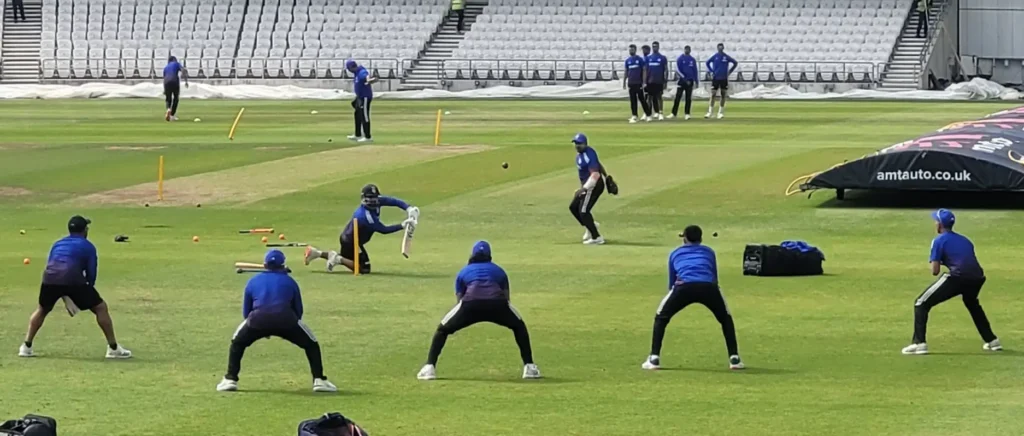
Rohit, leading from the front, grabbed 18 catches from 33 tries at 54.5%. He kept everyone calm and in the right spots. KL Rahul was the sharpest, nailing 12 out of 18 chances at a 66% rate. His soft hands were gold in tight moments. Virat Kohli, not at his fielding best, still took 11 catches from 27 chances at 40%. India’s bowlers owed a lot to this crew, who made sure edges stuck.
New Zealand — 78.5%
New Zealand, always a scrappy side, had a solid WTC run but missed the final. In 14 Tests, they won 7 and lost 7, ending with a points percentage of 48.21. Their 3-0 sweep of India in India was a massive highlight, proving they could take on anyone. A big part of their success was their slip and gully fielding, with a 78.5% catch efficiency, second only to India. Those catches turned games, especially in tough moments.
| Player | Span | Mat | Inns | Ct | Max | Ct/Inn |
|---|---|---|---|---|---|---|
| DJ Mitchell | 2023–2024 | 13 | 25 | 24 | 3 | 0.96 |
| TWM Latham | 2023–2024 | 14 | 27 | 15 | 2 | 0.555 |
| WA Young | 2024–2024 | 7 | 14 | 12 | 3 | 0.857 |
| KS Williamson | 2023–2024 | 11 | 21 | 8 | 2 | 0.38 |
The Kiwi cordon had Daryl Mitchell, Tom Latham, Kane Williamson, and Will Young. Mitchell was unreal, grabbing 24 catches from 25 chances in 13 matches at a 96% success rate. He was like a magnet in the slips. Will Young wasn’t far behind, taking 12 of 14 chances at 85.7% with quick reflexes.
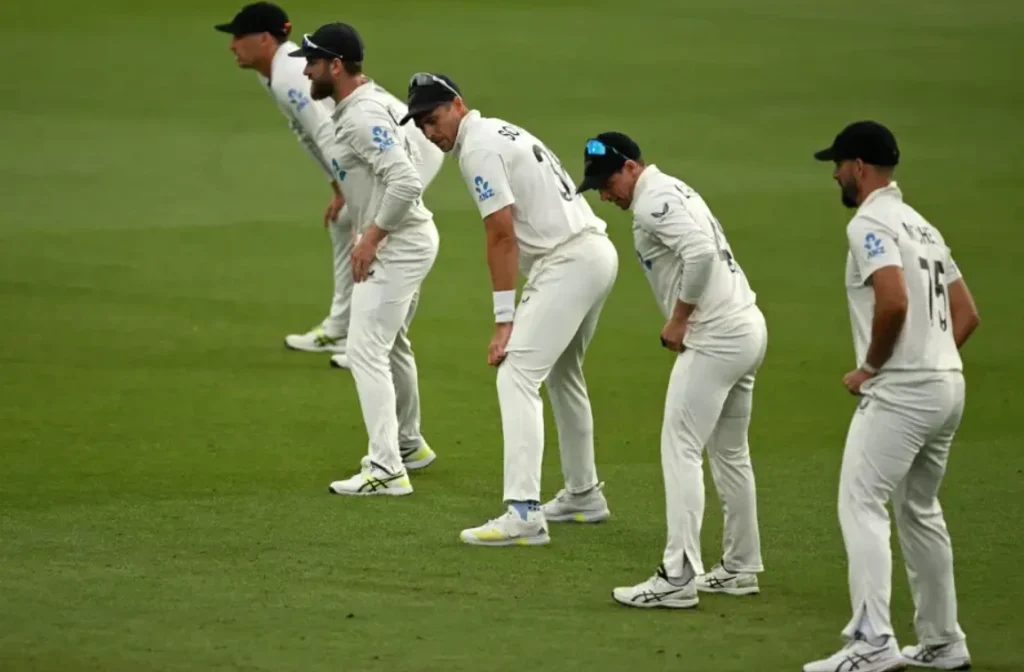
Tom Latham was steady, pouching 15 catches from 27 tries, while Kane Williamson had a rare off day, managing just 8 from 21. New Zealand’s cordon showed their heart and hustle, even if they didn’t get to the final.
South Africa — 75%
South Africa ruled the 2023–2025 WTC, beating Australia in the final to take the crown. They played 12 Tests, winning 8, losing 3, and drawing 1, topping the table with a 69.44 points percentage. Their slip and gully fielding was a big reason why, with a 75% catch efficiency that ranked fourth.
| Player | Span | Mat | Inns | Ct | Max | Ct/Inn |
|---|---|---|---|---|---|---|
| AK Markram | 2023–2025 | 11 | 22 | 20 | 2 | 0.909 |
| DG Bedingham | 2023–2025 | 13 | 26 | 17 | 4 | 0.653 |
| T Stubbs | 2024–2025 | 10 | 20 | 14 | 2 | 0.700 |
| M Jansen | 2023–2025 | 7 | 14 | 9 | 4 | 0.642 |
Those catches were clutch, turning close games in their favour. The Proteas’ cordon featured Aiden Markram, David Bedingham, Tristan Stubbs, and Marco Jansen. Markram was the standout, grabbing 20 catches from 22 chances in 11 matches at a 90.9% success rate. He made catching look easy.
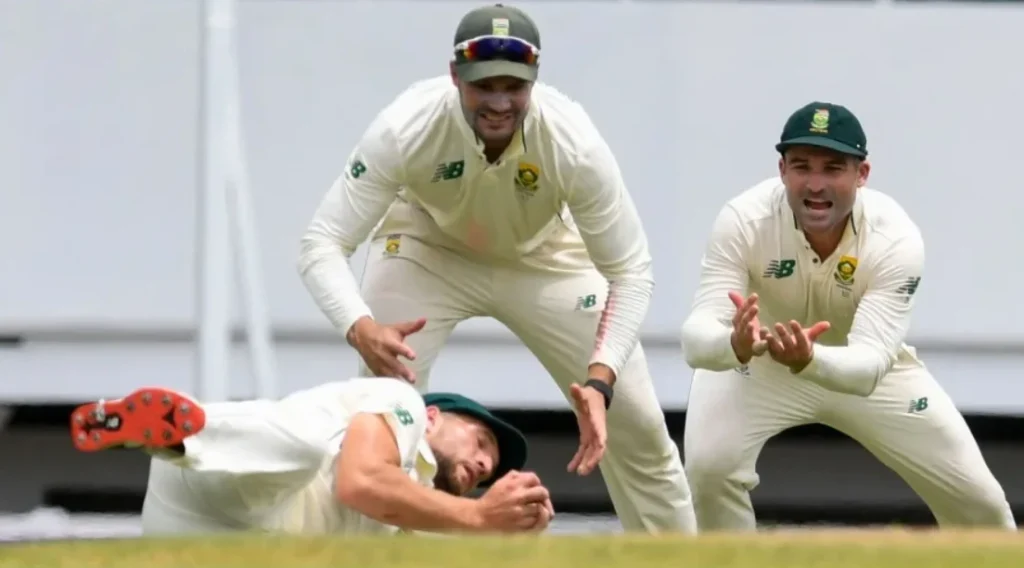
Bedingham, in 13 matches, took 17 catches from 26 tries at 65.3%, solid as ever. Stubbs was dependable, nailing 14 of 20 chances at 70% in 10 games. Even Jansen, a fast bowler, chipped in with 9 catches from 14 chances at 64.2%. This tight unit made sure South Africa’s bowlers got the wickets they deserved.
England — 74.5%
England’s aggressive “Bazball” approach kept them competitive in the WTC, though they missed the final. In 22 Tests, they won 11, lost 10, and drew 1, with a 43.18 points percentage. Their slip and gully fielding was strong, with a 74.5% catch efficiency, fifth among all teams.
| Player | Span | Mat | Inns | Ct | Max | Ct/Inn |
|---|---|---|---|---|---|---|
| JE Root | 2023–2024 | 22 | 43 | 35 | 3 | 0.813 |
| BM Duckett | 2023–2024 | 22 | 43 | 23 | 2 | 0.534 |
| HC Brook | 2023–2024 | 17 | 34 | 21 | 3 | 0.617 |
| Z Crawley | 2023–2024 | 19 | 37 | 19 | 3 | 0.513 |
The cordon featured Joe Root, Ben Duckett, Harry Brook, and Zak Crawley. Root was the standout, taking 35 catches from 43 chances in 22 matches at 81.3%. His experience was key in big moments. Duckett, also in all 22 matches, took 23 catches from 43 tries at 53.4%.
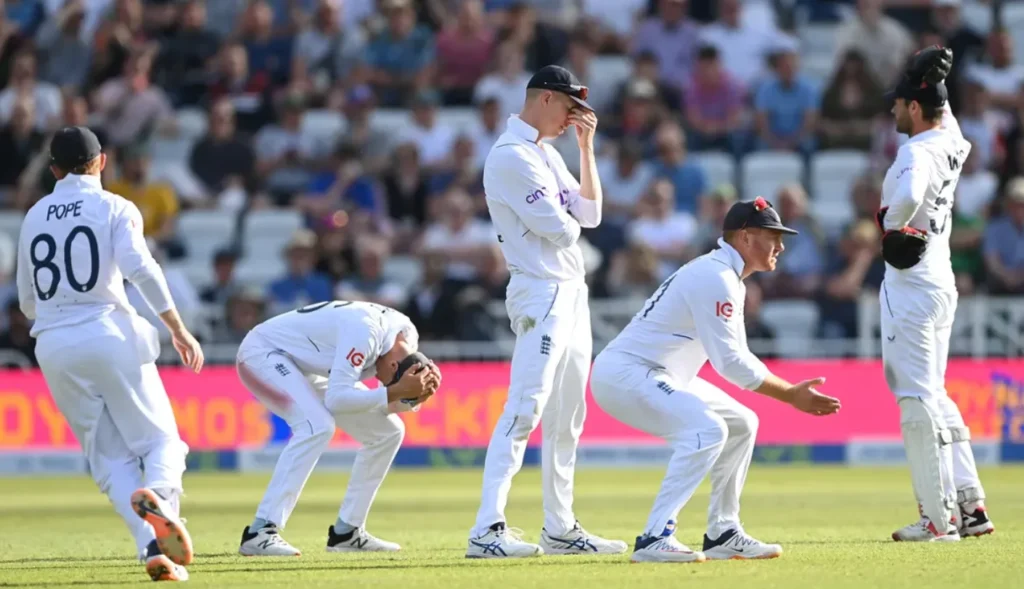
Harry Brook grabbed 21 catches from 34 chances in 17 matches at 61.7%, while Crawley took 19 from 37 in 19 matches at 51.3%. England’s cordon backed their bold cricket, keeping them in the fight. Their slip fielding was reliable, helping them stay competitive even in tough Tests. The stats show their catchers were always ready to pounce.
Australia — 72.3%
Australia had a great WTC cycle, reaching the final but losing to South Africa. In 19 Tests, they won 13, lost 4, and drew 2, with a 67.54 points percentage. Their slip and gully fielding, at 72.3% efficiency, ranked sixth and was crucial in wins like the 2024-25 Border-Gavaskar Trophy. The cordon included Steve Smith, Usman Khawaja, Marnus Labuschagne, and Cameron Green.
| Player | Span | Mat | Inns | Ct | Max | Ct/Inn |
|---|---|---|---|---|---|---|
| SPD Smith | 2023–2025 | 20 | 39 | 43 | 5 | 1.102 |
| UT Khawaja | 2023–2025 | 20 | 39 | 18 | 2 | 0.461 |
| M Labuschagne | 2023–2025 | 20 | 39 | 13 | 2 | 0.333 |
| C Green | 2023–2025 | 8 | 15 | 10 | 2 | 0.666 |
Smith was a catching machine, taking 43 catches from 39 chances in 20 matches, with an amazing efficiency rate of catches per innings. Khawaja was steady, grabbing 18 catches from 39 tries at 46.1%. Labuschagne had a tough cycle, taking 13 from 39 chances at 33.3%. Green, in 8 matches, took 10 catches from 15 at 66.6%.
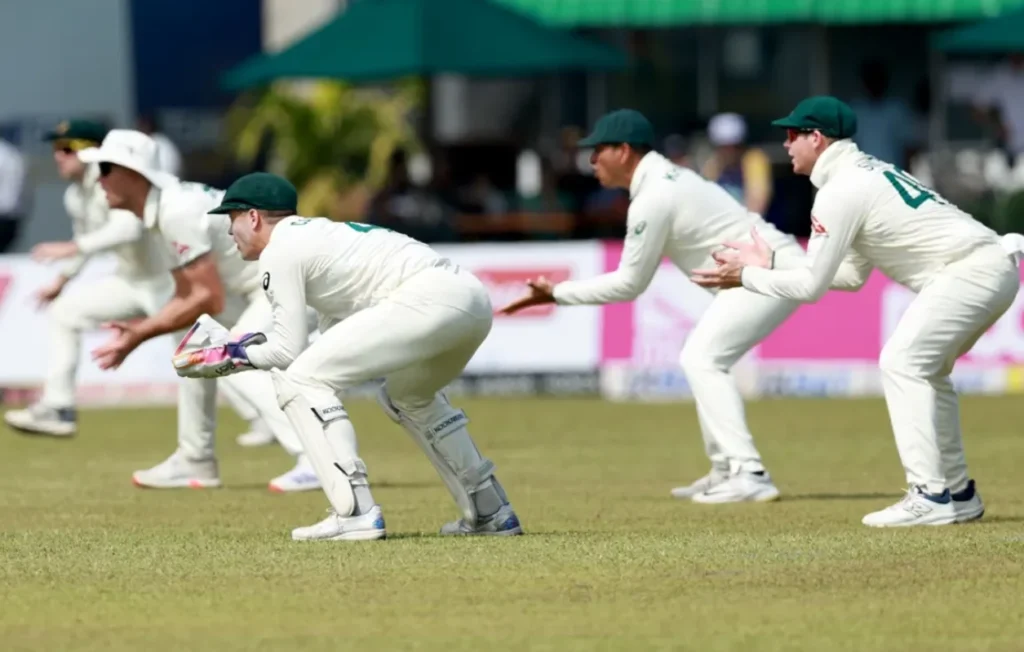
Australia’s cordon, led by Smith’s safe hands, turned key moments into wickets. Their fielding was a big part of their strong campaign, keeping them in contention until the end. The stats prove their slip catchers were a vital asset.
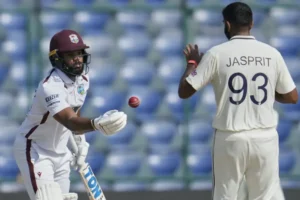

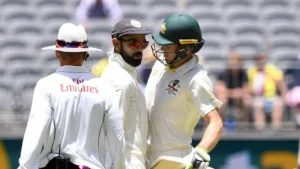

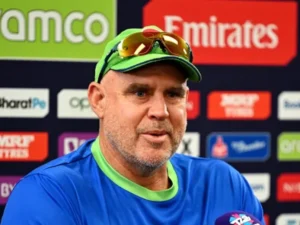
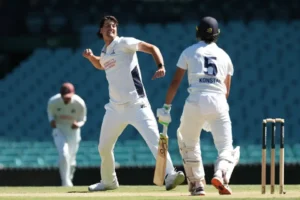

Comments